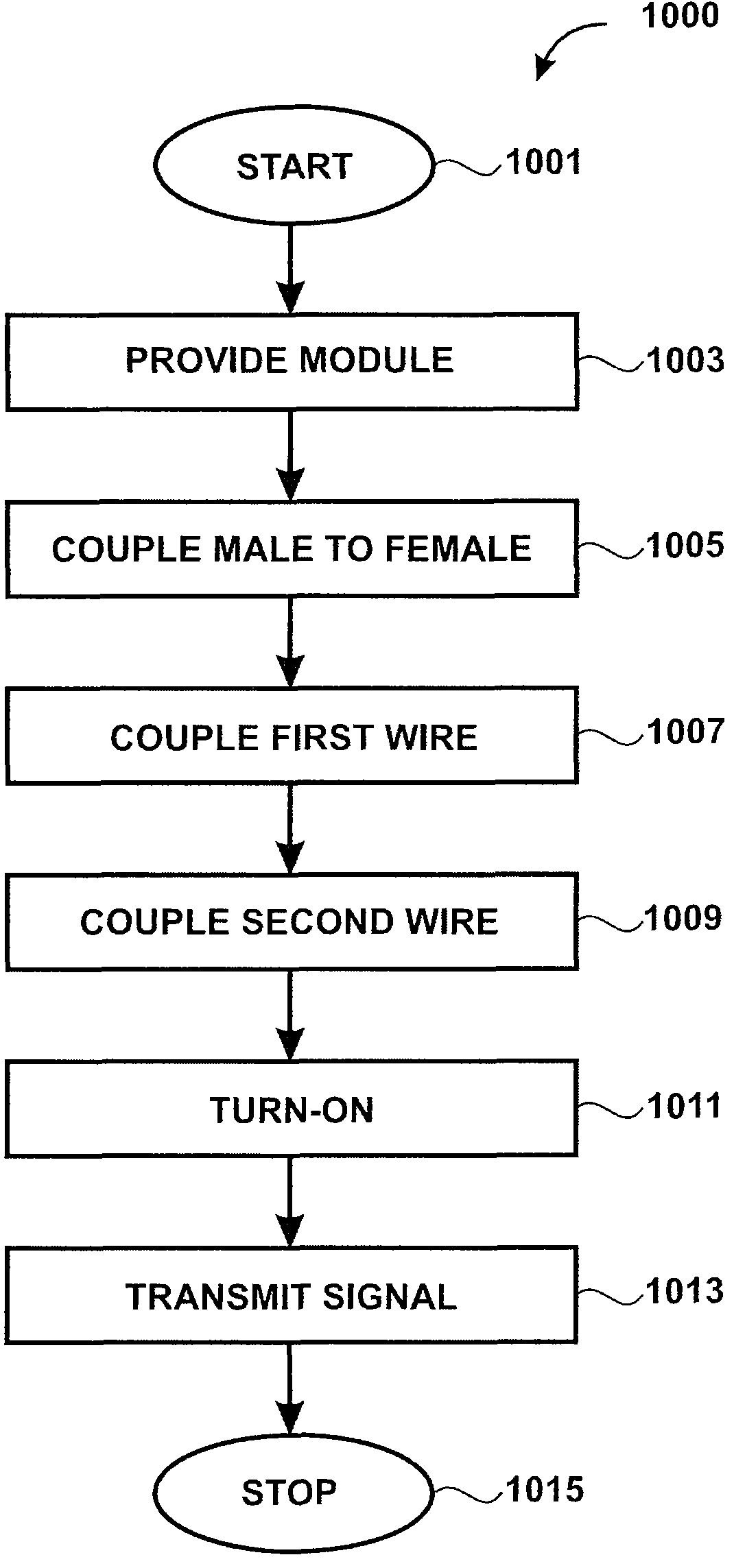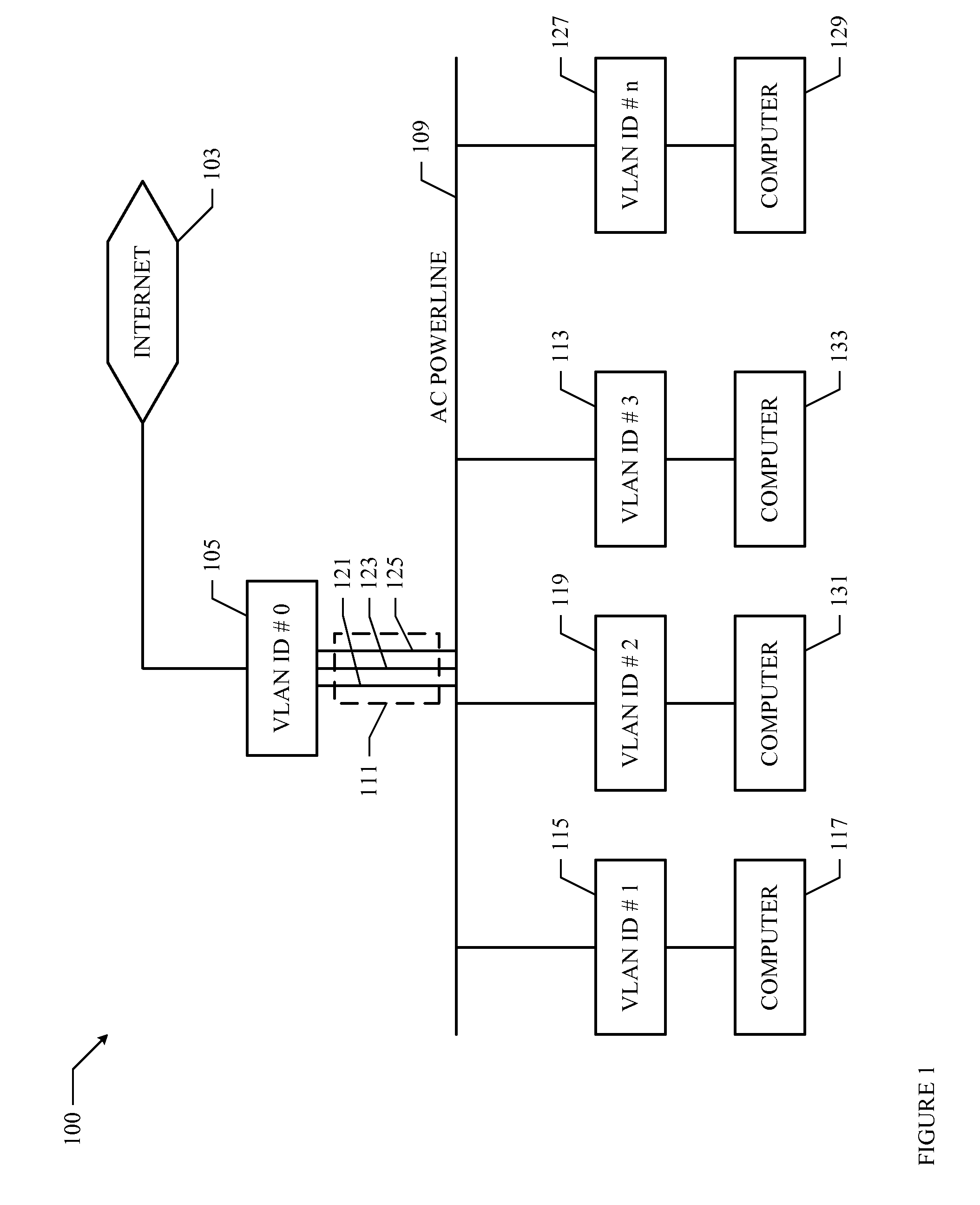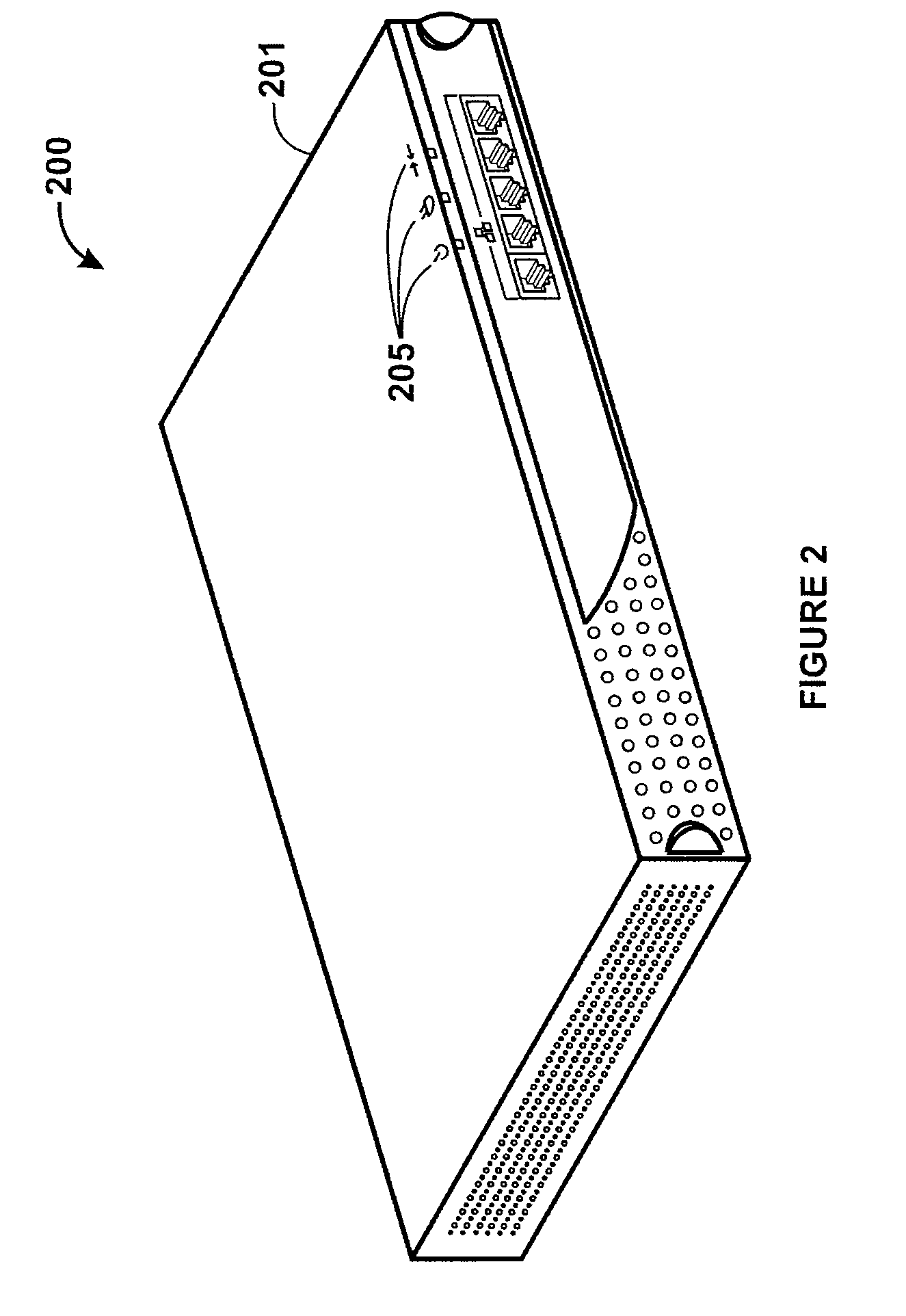Non-intrusive method and system for coupling powerline communications signals to a powerline network
a powerline communication and non-intrusive technology, applied in the field of power line networking techniques, can solve the problems of power line communication generally having limited capability, power line networking not being “mainstream”, and many limitations still exist, and achieve the effect of convenient implementation
- Summary
- Abstract
- Description
- Claims
- Application Information
AI Technical Summary
Benefits of technology
Problems solved by technology
Method used
Image
Examples
Embodiment Construction
[0030]According to the present invention, techniques for power line networking are provided. More particularly, the invention provides an apparatus for a high speed power line network using a non-intrusive coupling device, which interfaces between a powerline module and powerline network. Merely by way of example, the invention has been applied in a local area network environment, but it would be recognized that other applications exist. The invention can also be applied to building area networking, home networking, office networking, apartments, any combination of these, and other networking applications.
[0031]FIG. 1 is a simplified diagram of a power line system according to an embodiment of the present invention. This diagram is merely an example, which should not unduly limit the scope of the claims herein. One of ordinary skill in the art would recognize many variations, alternatives, and modifications. As shown, the system 100 for power line networking is included. The system ...
PUM
 Login to View More
Login to View More Abstract
Description
Claims
Application Information
 Login to View More
Login to View More - R&D
- Intellectual Property
- Life Sciences
- Materials
- Tech Scout
- Unparalleled Data Quality
- Higher Quality Content
- 60% Fewer Hallucinations
Browse by: Latest US Patents, China's latest patents, Technical Efficacy Thesaurus, Application Domain, Technology Topic, Popular Technical Reports.
© 2025 PatSnap. All rights reserved.Legal|Privacy policy|Modern Slavery Act Transparency Statement|Sitemap|About US| Contact US: help@patsnap.com



